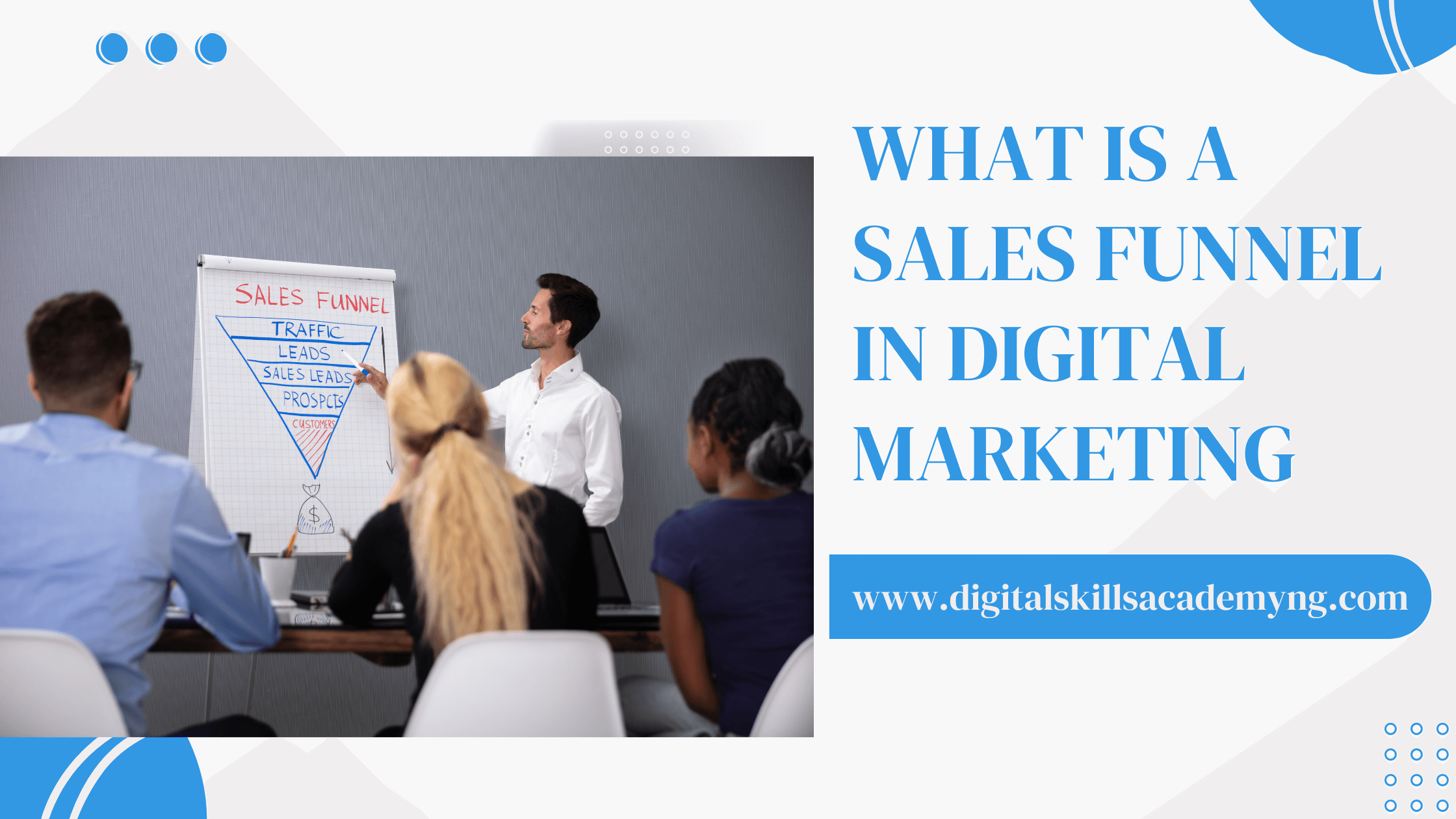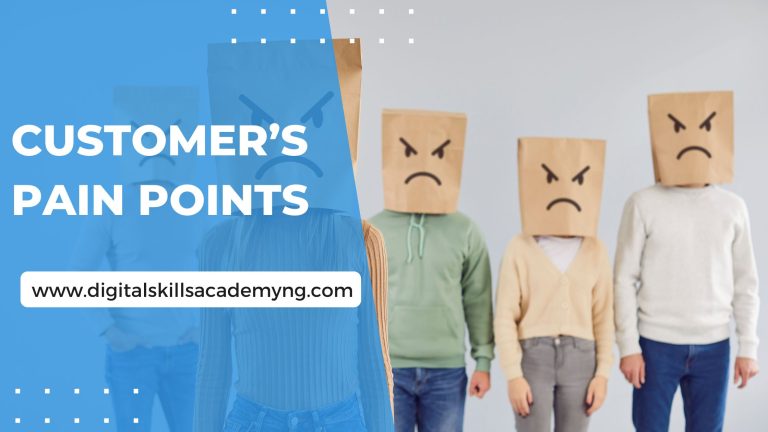What is a sales funnel in digital marketing?
In the world of marketing and sales, the term “sales funnel” frequently pops up. But what exactly does it mean?
Is it the regular tube for pouring in a liquid or some big strategy to persuade an audience? There is only one way to find out!
This post will explore a sales funnel, why it’s crucial for businesses, how to build one, and real-world examples from popular brands. By the end, you’ll clearly understand sales funnels and how they can boost your business.
DIFFERENCE BETWEEN SOCIAL SELLING AND SOCIAL MEDIA MARKETING
Table of Contents
What is a Sales Funnel in Digital Marketing?
At its core, a sales funnel is a visual representation of the customer journey, illustrating the process potential customers go through before making a purchase.
What is Customer Journey Mapping?
Imagine your funnel: it’s wide at the top and narrows to a small opening at the bottom. This shape represents how many people enter at the top but only a fraction make it to the bottom, where a sale occurs.
Key Stages of a Sales Funnel
There are five (5) key stages of a sales funnel in digital marketing and can be denoted as AIDAA (Awareness, Interest, Decision, Action, and Advocacy).
Awareness:
At the top of the funnel, potential customers become aware of your product or service. This might happen through social media, advertisements, blogs, or word-of-mouth.
Interest:
Once they know about you, they may express interest by visiting your website, subscribing to a newsletter, or following your social media accounts.
Decision:
In this stage, potential customers weigh their options. They might compare your product to others, read reviews, or seek more information.
Action
It can be identified as;
- Intent: Here, they show intent to purchase. This could involve adding items to a cart or reaching out for more details.
- Purchase: Finally, they decide to buy your product or service.
Loyalty and Advocacy:
After the sale, if the customer is happy, they may return for more and recommend your brand to others.
Purpose of a Sales Funnel
The main purpose of a sales funnel is to guide potential customers through their buying journey. By mapping out this journey, businesses can:
- Identify Pain Points: Understand where customers drop off in the process and why.
- Optimize Marketing Efforts: Tailor marketing strategies to target specific stages of the funnel.
- Increase Conversions: Turn more leads into customers by addressing their needs at each stage.
- Build Relationships: Nurture leads into loyal customers who return for repeat business.
Importance of a Sales Funnel to a Business
A well-structured sales funnel is vital for several reasons:
Clarity and Focus:
It provides a clear roadmap for both marketing and sales teams. Knowing where potential customers are in the funnel helps tailor communication and strategies effectively.
Efficiency:
By analyzing the funnel, businesses can pinpoint where to invest their time and resources for the best returns. This can lead to cost savings and better allocation of marketing budgets.
Better Customer Insights:
Understanding customer behavior at each funnel stage helps businesses develop better products, services, and marketing campaigns that resonate with their audience.
Higher Sales:
Ultimately, a well-managed sales funnel can lead to increased sales and revenue. By nurturing leads and optimizing the conversion process, businesses can boost their bottom line.
How to Build a Sales Funnel
Building a sales funnel can seem daunting, but it’s a manageable process. Here’s a step-by-step guide to creating your funnel:
Step 1: Define Your Target Audience
Understand who your ideal customers are. Create buyer personas that include demographics, interests, and pain points. Knowing your audience helps tailor your funnel effectively.
Step 2: Map out the Stages
Identify the stages of your sales funnel based on your business model. For most, it will follow the typical stages of awareness, interest, consideration, intent, purchase, and loyalty.
Step 3: Create Valuable Content
Develop content that addresses the needs of your customers at each stage of the funnel. For example:
- Awareness: Blog posts, social media posts, infographics.
- Interest: EBooks, webinars, newsletters.
- Decision: Product comparisons, case studies, testimonials.
- Intent: Free trials, demos, and limited-time offers.
- Purchase: Easy checkout process, customer support.
- Loyalty: Follow-up emails, and loyalty programs.
Step 4: Choose the Right Tools
Utilize marketing automation tools to manage your funnel effectively. Platforms like HubSpot, ClickFunnels, or MailChimp can help you track leads and automate follow-ups.
Step 5: Monitor and Analyze
Regularly assess your funnel’s performance. Use metrics such as conversion rates, click-through rates, and customer feedback to determine what’s working and what isn’t.
Step 6: Optimize Continuously
Based on your analysis, make adjustments to improve your funnel. This might involve refining your messaging, adjusting your content strategy, or enhancing your customer service.
Examples of Sales Funnel Processes with Popular Brands
To illustrate how sales funnels work in the real world, let’s look at a few well-known brands and their sales funnel strategies.
Example 1: Amazon
Awareness: Amazon utilizes targeted ads and SEO to attract potential customers.
Interest: Customers visit the website, explore product categories, and read reviews.
Decision: They add items to their cart or create a wish list.
Intent: Amazon prompts users with reminders about items left in the cart.
Purchase: The one-click checkout feature simplifies the purchase process.
Loyalty: Through Prime membership and personalized recommendations, Amazon encourages repeat purchases.
Example 2: HubSpot
Awareness: HubSpot attracts leads through informative blog posts and downloadable content.
Interest: Visitors subscribe to newsletters or register for webinars.
Decision: They compare HubSpot’s tools against competitors via case studies and testimonials.
Intent: Free trials are offered to encourage users to experience the product firsthand.
Purchase: Easy sign-up and onboarding processes facilitate conversion.
Loyalty: HubSpot maintains relationships through excellent customer service and ongoing training resources.
Example 3: Nike
Awareness: Nike runs compelling marketing campaigns featuring athletes and influencers.
Interest: Users engage with Nike through social media and visit the website.
Decision: They explore product reviews and look for personalized recommendations.
Intent: Limited-time offers and exclusive releases create urgency.
Purchase: A streamlined online shopping experience and physical store accessibility make buying easy.
Loyalty: Nike encourages loyalty through membership programs, exclusive access to products, and community events.
Components of a Sales Funnel
To effectively implement a sales funnel, certain components are essential:
Lead Generation: Techniques to attract potential customers, like SEO, content marketing, social media, and advertising.
Lead Nurturing: Building relationships through email marketing, personalized content, and follow-ups.
Conversion Tactics: Strategies to encourage purchases, such as discounts, free trials, and clear calls to action.
Customer Retention: Efforts to keep customers engaged post-purchase, such as loyalty programs and excellent customer service.
Analytics: Tools to track the funnel’s performance and customer behavior, allowing for informed decision-making.
What We Say
A sales funnel is more than just a marketing buzzword; it’s a critical framework for guiding potential customers through their buying journey. By understanding and implementing a sales funnel, businesses can improve their marketing strategies, boost conversions, and cultivate lasting customer relationships.
With clear stages, targeted content, and ongoing analysis, any business—large or small—can create a successful sales funnel.
Our certified Digital marketing course will teach you how to perform customer and business research, provide customer service strategies, develop a customer retention plan, and research all the key marketing channels to leverage them to engage your customers and grow your business. What are you waiting for?




